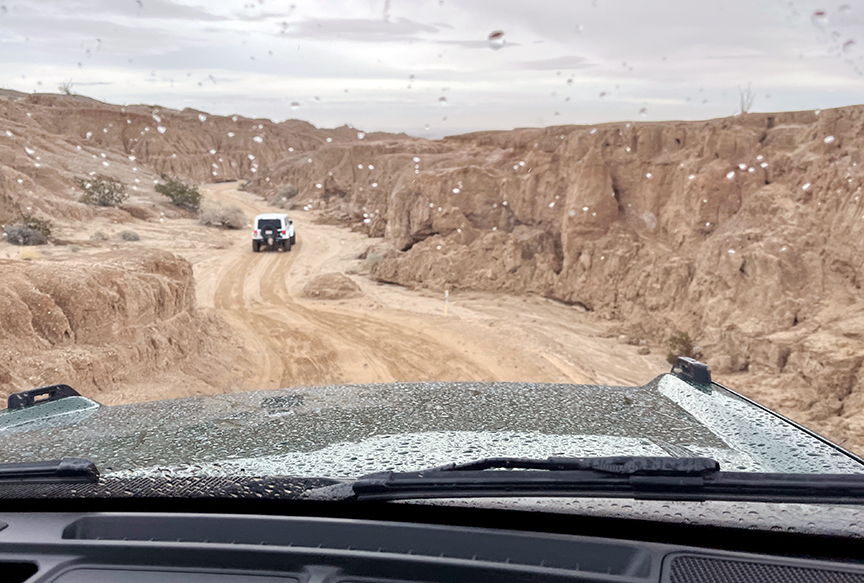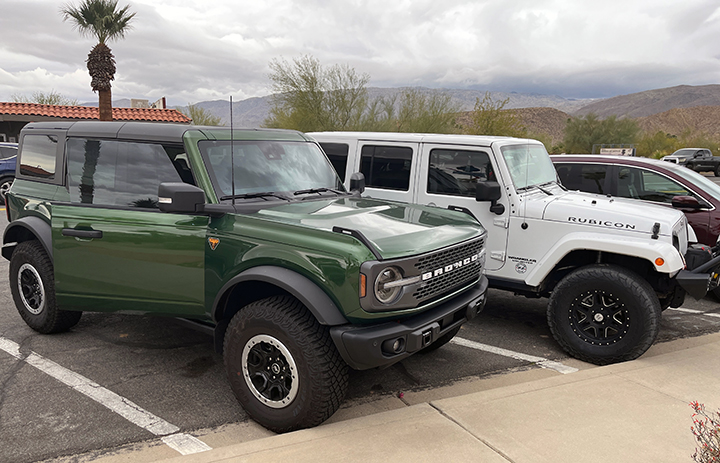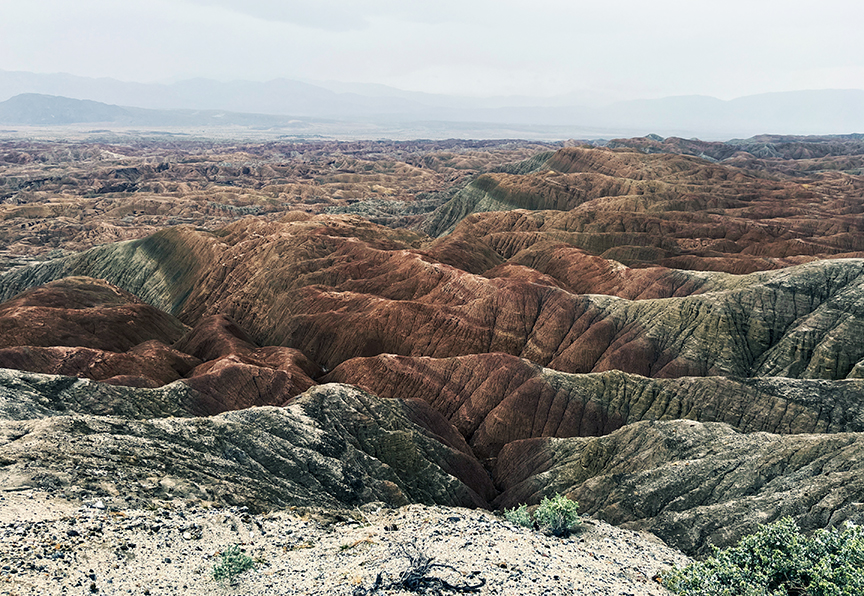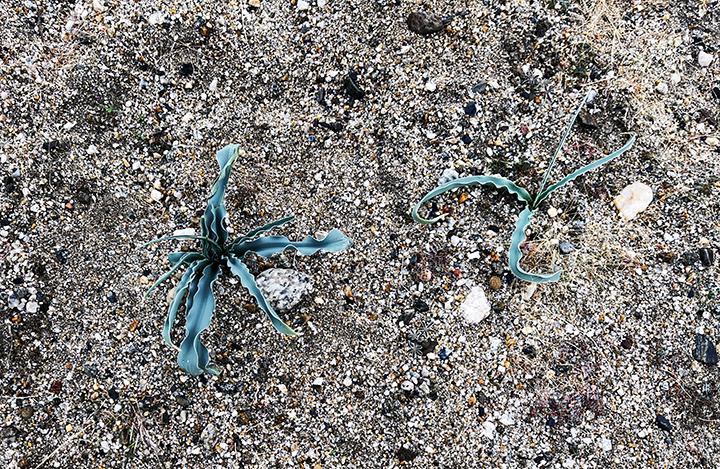
During the afternoon of January 20, I joined a band of fellow board and staff members of the Anza-Borrego Foundation, as well as a few of their kids, on a visit to two popular sites in Anza-Borrego Desert State Park. The first was Vista del Malpais and the other was Coyote Canyon, to check out where the “road” had been washed out there by water brought by recent rains.
We needed four-wheel off-road vehicles and Paulette Donnellon and Sergey Kushch provided two of the better ones. Paulette had her Jeep Wrangler Rubicon and Sergey had the redesigned Ford Bronco and the appropriately named “Badlands” model. Here they are pre-excursion.

Also in the group were board member Stephanie DiPalma and her husband, Tom, in their Jeep Wrangler Sport, and ABF executive director Bri Fordem and board member Maris Brancheau.
The Vista del Malpais is, as the words themselves convey, where you have a “view of the bad country,” or as commonly used in the West, the badlands. To get there, you have to go through some “not-so-great” lands, in terms of easy travel, anyway. That’s Sergey’s and my view from the Bronco at the top of this post.
We did finally get to the view point and it was definitely worth the trip.
 We also saw a few desert lilies, a potential harbringer of what might be widespread flowering of the desert in the spring.
We also saw a few desert lilies, a potential harbringer of what might be widespread flowering of the desert in the spring.
 The Coyote Canyon area of Anza-Borrego Desert State Park is about 75,000 acres in size, about a sixth of the Park. It is a deep cut between mountain ranges extending about 10 miles northwest of Borrego Springs. A section of the San Jacinto Fault runs right through the area and it is considered an active seismic zone.
The Coyote Canyon area of Anza-Borrego Desert State Park is about 75,000 acres in size, about a sixth of the Park. It is a deep cut between mountain ranges extending about 10 miles northwest of Borrego Springs. A section of the San Jacinto Fault runs right through the area and it is considered an active seismic zone.
Coyote Canyon is closed to the public June 1-September 30 each year to allow Peninsular Bighorn Sheep access to the creek that runs through the canyon.
When we went, access was closed at the “Third Crossing,” so named because it was the third occasion on the trail where the Coyote Creek could flow over it during the wet season. And it was flowing.
Just off to the side of the “road” and creek was possible evidence of prior and historic seismic activity — a dramatic collection of huge boulders. An adult human would be less than half the height of most of these.
 That evening in Borrego Springs, we joined other ABF board and staff members, along with friends and family, at a “Sip & Savor Soirée” wine-tasting event at the Borrego Springs home of Jimmy and Judy Smith. Refined conclusion to a rugged (in a good way) day.
That evening in Borrego Springs, we joined other ABF board and staff members, along with friends and family, at a “Sip & Savor Soirée” wine-tasting event at the Borrego Springs home of Jimmy and Judy Smith. Refined conclusion to a rugged (in a good way) day.
